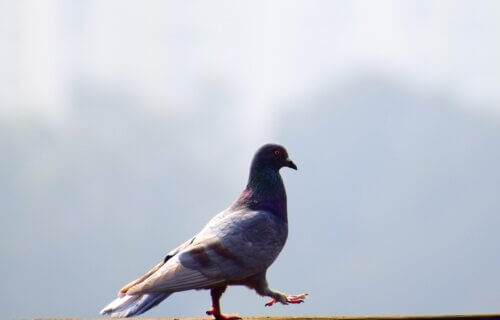COLUMBUS, Ohio — Calling someone a “birdbrain” may be a compliment before too long. Fascinating new research from a team at The Ohio State University suggests pigeons are capable of solving certain problems that would frustrate even the smartest humans. Even more notable, their study finds pigeons solve problems the same way artificial intelligence (AI) would.
Prior studies have already shown pigeons are capable of learning how to solve complex categorization tasks that human ways of thinking (selective attention, explicit rule use) would not be useful in solving. Researchers have theorized that pigeons use a “brute force” method of solving problems that is actually quite similar to what many AI models do, according to Brandon Turner, lead author of the new study and professor of psychology at Ohio State.
Now, this latest research lends further credence to that theory. Prof. Turner and a colleague tested a simple AI model to see if it could solve the problems in the way they thought pigeons did, and it was successful.
“We found really strong evidence that the mechanisms guiding pigeon learning are remarkably similar to the same principles that guide modern machine learning and AI techniques,” Prof. Turner says in a university release. “Our findings suggest that in the pigeon, nature may have found a way to make an incredibly efficient learner that has no ability to generalize or extrapolate like humans would.”
Prof. Turner conducted this research in collaboration with Edward Wasserman, a professor of psychology at the University of Iowa. During experiments, pigeons were shown a stimulus, which could include lines of various widths and angles, concentric rings, and sectioned rings. Then, the birds had to peck a button on the right or left to indicate which category it belonged to. If the pigeon was correct, a food pellet would appear as a reward. If they were wrong, nothing happened.
In all, this study was made up of four tasks, with some being harder than others. The results showed that, through trial and error, the pigeons gradually improved their ability to make the correct choices in one of the easier experiments from about 55 percent to 95 percent of the time. Even during the more difficult tasks, the birds were able to improve their responses a bit more modestly (55% to 68%).

Study authors believe the pigeons used what is called associative learning, which refers to linking two phenomena with each other. For instance, it is easy to comprehend the link between “water” and “wet.” Another example is people teaching their dogs to link sitting when they are commanded to receive a treat. Of course, these are simple and relatively easy associations.
“Associative learning is frequently presumed to be far too primitive and rigid to explain complex visual categorization like what we saw the pigeons do,” Prof. Turner explains.
And yet, that’s exactly what the researchers observed. Meanwhile, their AI model tackled the very same tasks using only the two simple mechanisms the pigeons were presumed to be using: associative learning and error correction. Sure enough, just like the pigeons, the AI model was able to learn how to make the right predictions, significantly increasing its number of correct answers.
When presented with a task like this, humans will attempt to find or come up with a rule or rules that could make the task easier.
“But in this case, there were no rules that could help make this any easier. That really frustrates humans and they often give up on tasks like this,” Turner continues. “Pigeons don’t try to make rules. They just use this brute force way of trial and error and associative learning and in some specific types of tasks that helps them perform better than humans.”
In conclusion, researchers can’t help but see the humor in pigeons of all creatures using a method of learning so similar to AI designed by humans.
“We celebrate how smart we are that we designed artificial intelligence, at the same time we disparage pigeons as dim-witted animals,” the study author concludes. “But the learning principles that guide the behaviors of these AI machines are pretty similar to what pigeons use.”
The study is published in the journal Science.
You might also be interested in:
- Pigeons have something surprising in common with artificial intelligence
- Mighty bird brains: Study finds pigeons better multitaskers than humans
- Best Of The Best Bird Feeders In 2023: Top 5 Products Most Recommended By Experts

